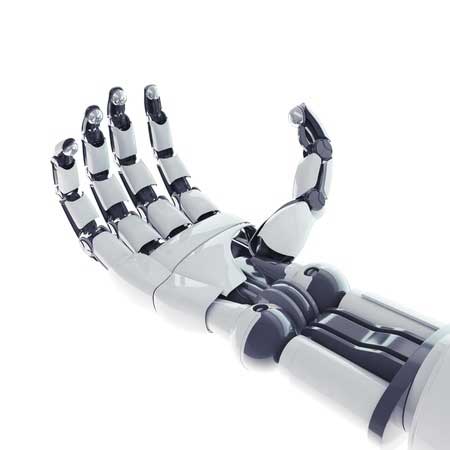
The sight of a paralysed woman controlling a robotic arm, using just her thoughts, was enough to dominate the headlines in 2012.
At the time, experts in the field said it was an “unprecedented performance” and a “remarkable achievement”.
Two years on, the same woman has taken another significant step towards restoring her natural movements by controlling the arm with a range of complex hand movements.
Jan Scheuermann, who has longstanding quadriplegia, is now able to give high fives and thumbs up.
The plaudits go to researchers at the University of Pittsburgh, who have increased the manoeuvrability of the robotic arm from seven to 10 dimensions.
The story of Jan Scheuermann
Fifty-five-year-old Jan has been paralysed from the neck down since 2003 due to a neurodegenerative condition.
In 2012, she underwent surgery to be fitted with two quarter-inch electrode grids, each fitted with 96 tiny contact points, in the regions of Jan’s brain responsible for right arm and hand movements.
After the electrode grids in Jan’s brain were connected to a computer, creating a brain-machine interface (BMI), the 96 individual contact points picked up pulses of electricity that were fired between the neurons in Jan’s brain.
Computer algorithms were used to decode these firing signals and identify the patterns associated with a particular arm movement, such as raising the arm or turning the wrist.
By simply thinking of controlling her arm movements, Jan was then able to make the robotic arm reach out to objects, as well as move it in a number of directions and flex and rotate the wrist.
The remarkable story of Jan goes on. Two years on from the initial results, the researchers have now shown that Jan can successfully manoeuvre the robotic arm in a further four dimensions – finger abduction, scoop, thumb extension and a pinch.
The aim is to allow robotic arms to restore natural arm and hand movements in people with upper limb paralysis.
What they say
Co-author of the study Dr Jennifer Collinger said: “10D control allowed Jan to interact with objects in different ways, just as people use their hands to pick up objects depending on their shapes and what they intend to do with them.
“We hope to repeat this level of control with additional participants and to make the system more robust, so that people who might benefit from it will one day be able to use brain-machine interfaces in daily life.”
Commenting on the latest results, Jan Scheuermann said; “This has been a fantastic, thrilling, wild ride, and I am so glad I’ve done this.”
“This study has enriched my life, given me new friends and co-workers, helped me contribute to research and taken my breath away. For the rest of my life, I will thank God every day for getting to be part of this.”
To read more information and view the video see this Science Daily article
Image Copyright: / 123RF Stock Photo
This site uses Akismet to reduce spam. Learn how your comment data is processed.


 Mail:
Mail: 




Leave a Comments